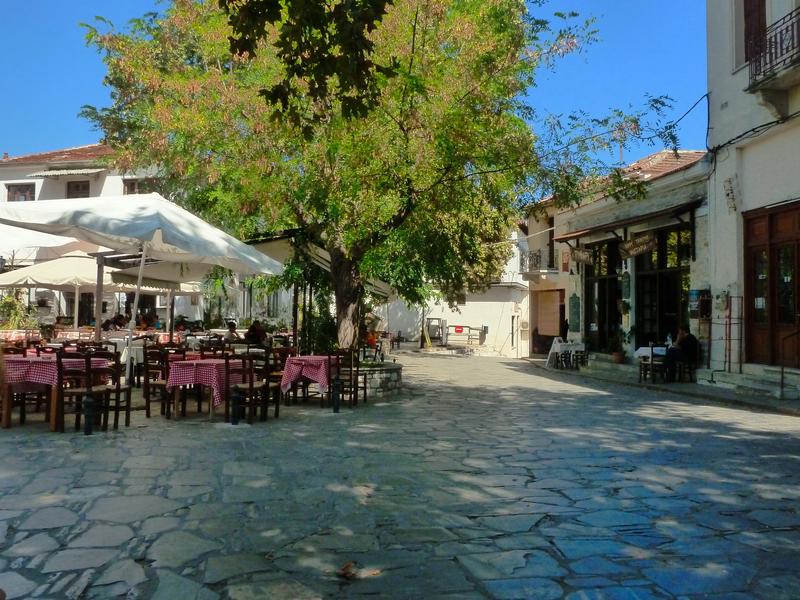Argalasti
Argalasti is 40 kilometers away from Volos. It is a traditional main village and head of Southern Pelion municipality. It is built on a prolific plateau, 250 meters high, surrounded by olive groves and wilderness. Its name derives from the words «arga» (slow) and «elavno» (march) because, according to tradition, this is where Jason’s Argo passed from on the way to Colchis. Another narrative says that the name is a result of paraphrasing the Turkish word «rast», which means forgiveness.
The village was founded during the 15th century by nomadic livestock farmers from Epirus, Continental Greece and Thessaly who abandoned their own villages to escape the Turks. The area's great pastures for their cattle convinced them to settle. Over the next years they started cultivating cereal, wheat and barley, and later olive trees, vineyards and other fruit trees. This great production of agricultural products resulted in financial growth. However, financial and cultural growth ceased in 1821; the villagers, instead of succumbing to the Turks, fought during the then-ongoing Greek Revolution against them and that led to the burn down of the village.

Today, Argalasti is a point of reference of southern Pelion. It is a touristic center full of stunning traditional manors, historic buildings and churches, cobble streets and arch bridges. The neoclassical marble bell tower - clock of Saints Apostoli Paul and Peter church is a trademark of the village. It is a sublime image, built in 1913, 45 meters high, bearing two Russian bells and a Swiss clock.
A few ways down the road you will reach the village’s paved square. Under the shade of the enormous plane trees you can enjoy your coffee and traditional tastes, served with local tsipouro (spirit) or local wine. In the surrounding streets there are beautiful traditional guest houses, small hotels and rooms for rent, taverns serving local dainties, cafés and bars. Architecture-wise the village maintains some of its traditions: folklore quarters, cobble streets and neoclassic manors emerge amongst modern buildings.

Near the village’s central square there is another important sight, the old Girls Boarding School built in the late 19th century. In the early 20th century, Kostas Varnalis (famous poet and philologist) was principal. The building was renovated in 2002, and today it serves as a place hosting various events. The arch bridges of the area, such as the one in Katsilohori at the entrance of the village, as well as the stone-built fountains, with Koehni and Ai Giannis being the most famous, are a must-see.
Paou monastery, also known as the old monastery of Saint Nikolaos, located only 2 kilometers away from Argalasti, is an important monument that you should visit. In its interior you will see excellent post-byzantine wall paintings and its patio offers a panoramic view to the Pagasetic Gulf and Argalasti. If you continue the road to the sea you will reach the picturesque beach of Mikri (Small) Paou.
Argalasti during the summer is a perfect starting point for your explorations around the coastline of the Pagasetic Gulf as well as the Aegean Sea. There is an abundancy of choicesand they will most certainly meet your expectations. On the Pagasetic Gulf’s side you can choose amongst sandy beaches in Lefocastro village, beautiful little gulfs in Horto village, Megali (Big) and Mikri (Small) Paou, Belian beach and Kalamos village. On the Aegean side don’t miss out on the fantastic sun and water on the enormous beach of Potistika, beach Paltsi or swimming in the deep blue water of Melani.
